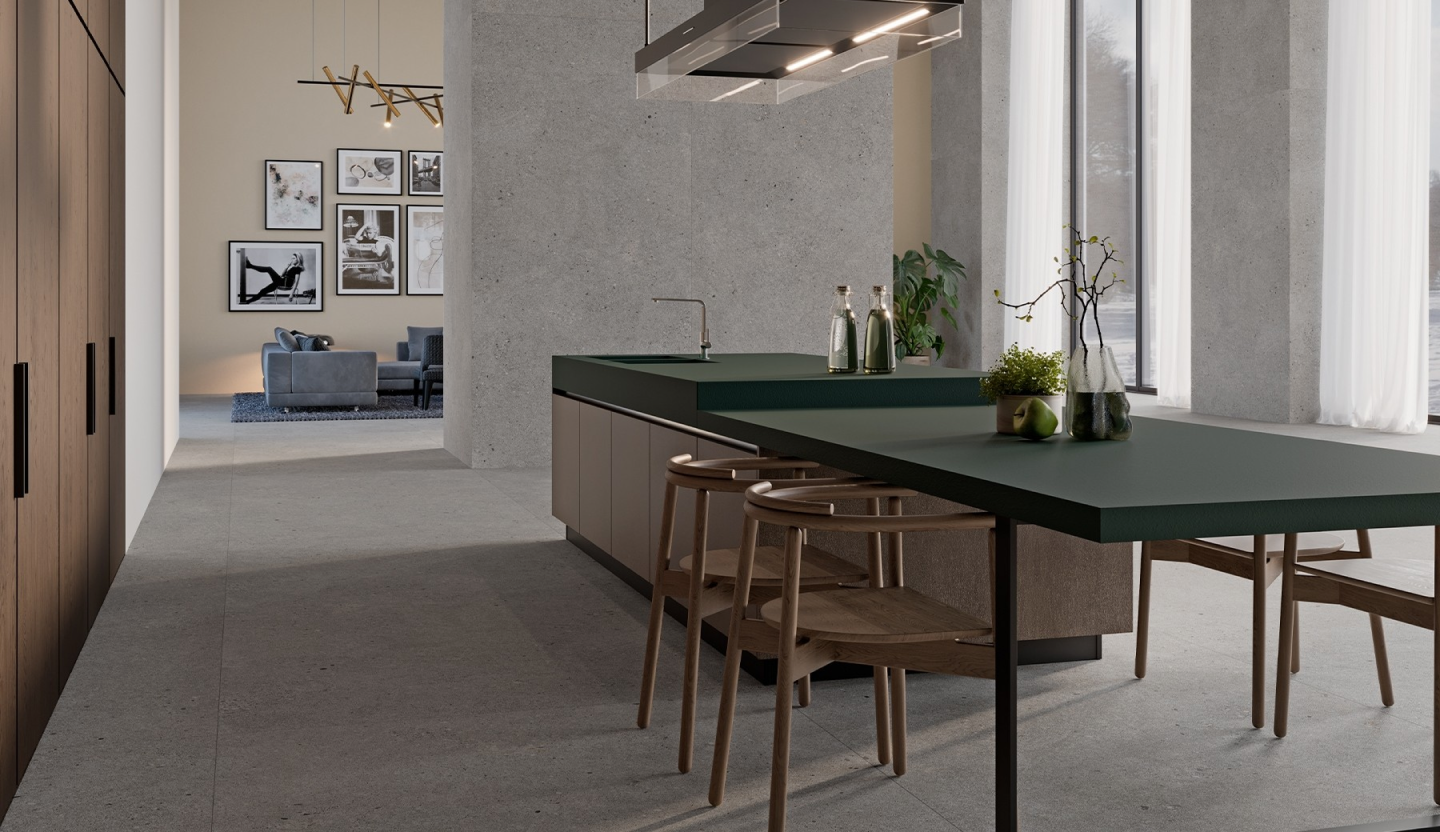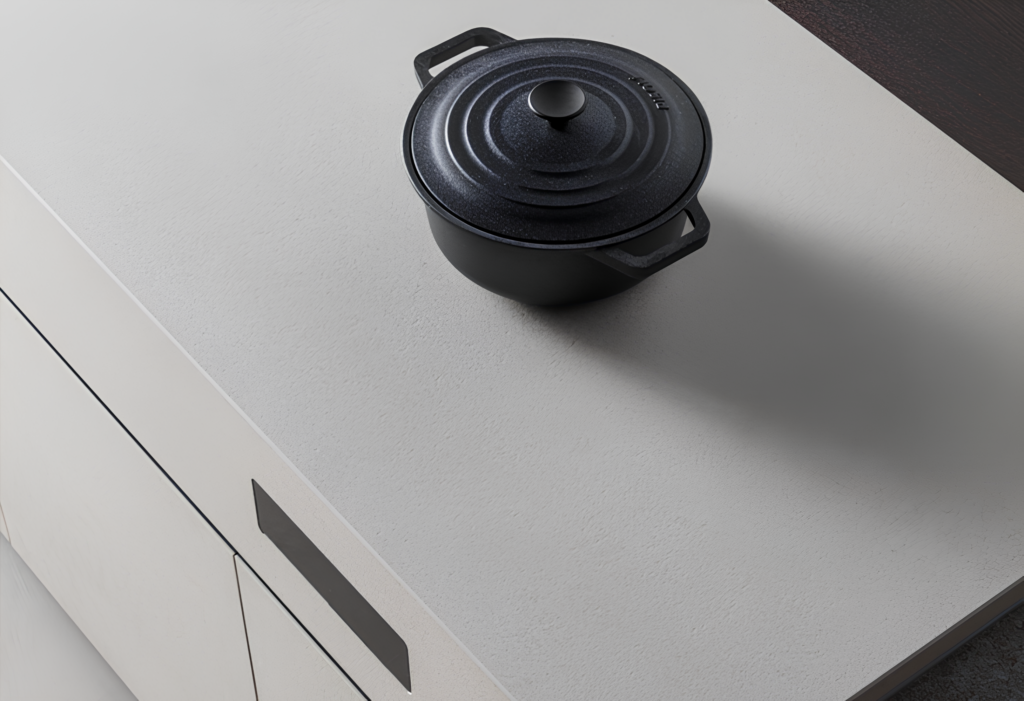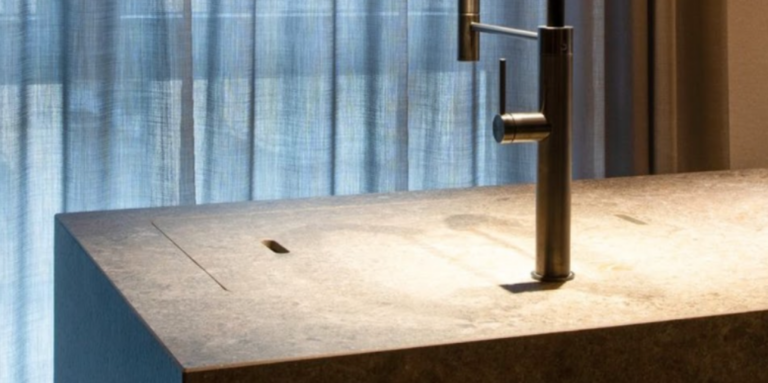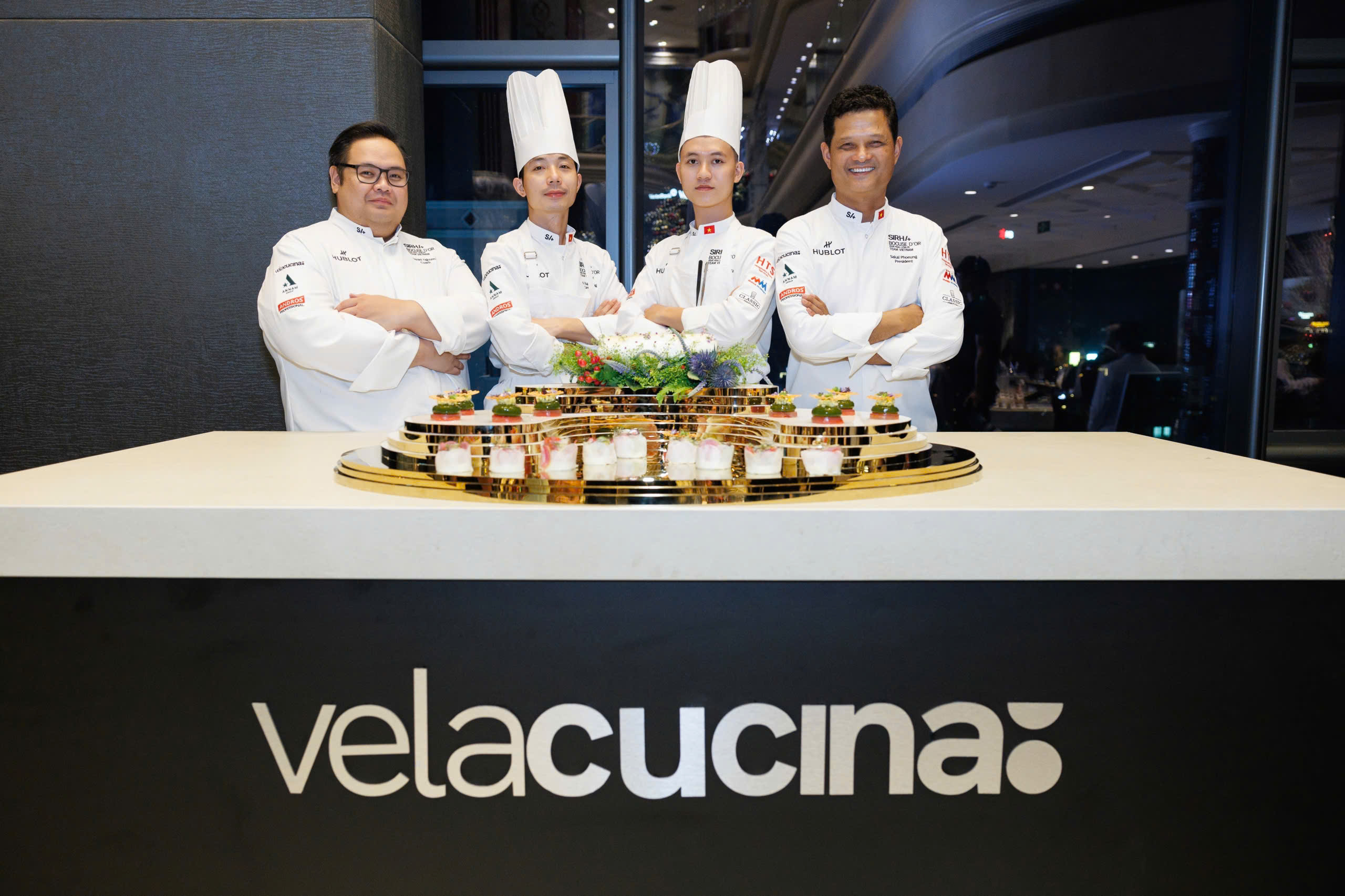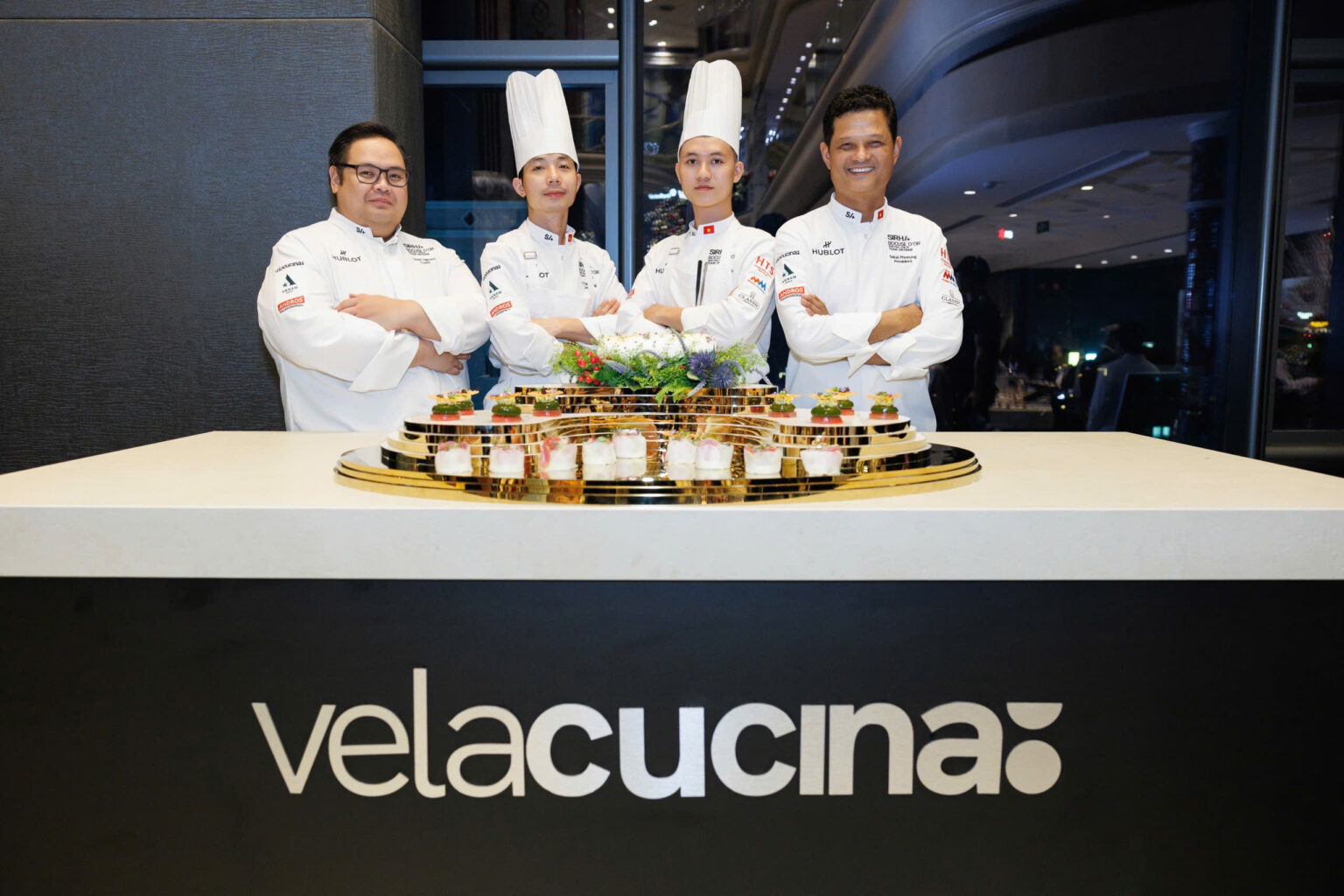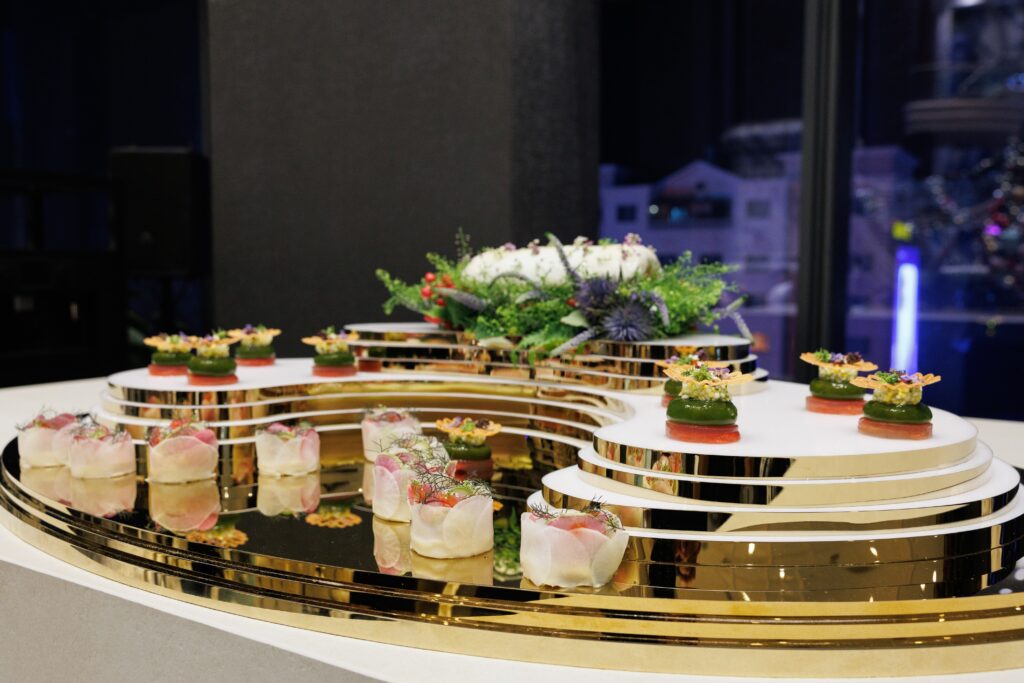Embarking on a kitchen transformation? One of the most impactful decisions you’ll make is choosing the right countertop. This step incorporates more than an aesthetic choice, it sets the health and safety standards you wish to incorporate into a house. In today’s kitchens, families are moving towards materials that offer durability, ease of maintenance, and safety for everyday use. So, which countertop material provides all of this, plus appeal?
In this guide, we’ll explore a curated selection of premium countertop materials, from quartz to granite, exploring each material’s design and practical benefits, all backed by exhaustive research. Our goal is to inspire your choice, ensuring the kitchen, you are creating, achieves both timeless beauty and enduring functionality.
Let’s delve into how intentional kitchen design can improve wellbeing and compare five popular countertop materials that are widely used in contemporary kitchens.
- The Impact of the Kitchen Design on Nutrition and Lifestyle
- The Impact of the Kitchen Countertop Material on Your Health.
- Quartz
- Surface used in Velacucina
- Granite
- Marble
- Solid Surface

1.The Impact of the Kitchen Design on Nutrition and Lifestyle
According to a research paper by Stroebele & de Castro, 2004, a well-designed kitchen can help foster healthier eating habits, reduce stress, and strengthen relationships. Their findings indicate that the environment in which we prepare and consume food influences our dietary choices and overall health. For instance, a welcoming, well-organized kitchen encourages more home cooking, which often leads to better nutrition and improved lifestyle habits.
As we all know, the kitchen is the heart of a house, it serves as a social hub. It’s where families bond over shared cooking experiences, friends gather for meaningful conversations, and traditions are passed down through generations. A thoughtfully designed space facilitates these interactions by providing comfortable seating areas, open layouts, and features that encourage our day-to-day communal activities.
To create a kitchen intentionally bent on minimizing stress, consider:
- Adding accessible storage, as it ensures healthy items are within easy reach, by using pull-out pantry shelves, lazy susans for corner spaces, and transparent storage to keep nutritious options visible.
- Use an ergonomic kitchen layout, as it enhances comfort and efficiency. Popular layouts include the “work triangle” between sink, stove, and fridge, reducing unnecessary movement. Adjusting counter heights and ensuring reachable cabinet spaces also support comfort.
- Streamline tasks with energy-efficient and smart appliances from self-cleaning ovens, innovative induction cooktops, to vacuum sealers, help save time and effort while supporting a calm kitchen environment. Incorporating elements that promote relaxation—like natural lighting, calming colors, and clutter-free spaces—can reduce stress and enhance mental wellbeing.
- Maximize natural light and choose calming color schemes—such as soft blues or neutral tones—to create a soothing atmosphere. Light-colored walls and mirrors also help amplify light.

2. The Impact of the Kitchen Countertop Material on Your Health
1. Quartz
Quartz countertops have undeniably taken the spotlight in Vietnamese modern kitchens. Their engineered stone composition offers a sleek, sophisticated look that easily complements any design style, from contemporary to classic. Made from crushed quartz mixed with resin, these countertops are celebrated for their durability, low-maintenance qualities, and resistance to stains, which makes them a favorite in busy kitchens.
In terms of practicality, quartz countertops are incredibly easy to care for—no special cleaners or sealants are required to keep them looking fresh. However, recent health studies and insights into quartz production are prompting many to reconsider this material. The quartz manufacturing process involves cutting, shaping, and polishing, which generates a fine silica dust. For workers involved, this dust has led to a worrying rise in silicosis, a respiratory condition associated with serious health risks. This concern has even prompted safety-focused reforms and, in some cases, quartz production restrictions worldwide.
Additionally, while quartz may be marketed as non-porous, it does have a degree of porosity that can make it challenging to keep completely hygienic over time. Tiny pores can trap food residues, increasing the potential for bacterial growth if not meticulously cleaned.
Quartz countertops undeniably offer elegance and ease, but it’s crucial to consider certified options and stay informed about the potential health implications for both end users and those involved in its production.
2. Surface used in Velacucina
Velacucina countertops offer an innovative option for those seeking durability, aesthetics, and wellness in their kitchen design. Crafted from a unique, environmentally friendly material, these countertops are free from harmful chemicals and volatile organic compounds (VOCs), ensuring a healthier environment both in your home and during the production process. Their exceptional resistance to heat, scratches, and water makes them well-suited for the demands of a modern kitchen, providing long-lasting performance with minimal maintenance.
One of the standout features available only with Velacucina’s special material is the integration of invisible induction technology. This innovative solution embeds induction cooking zones seamlessly beneath the countertop surface, allowing the workspace to remain smooth and uninterrupted when not in use. When activated, the induction zones efficiently heat cookware while the surrounding surface stays cool to the touch. This technology not only enhances functionality but also contributes to a minimalist, sleek kitchen design by eliminating the visual presence of traditional cooktops.
The invisible induction solution adds a level of sophistication and space-saving convenience that aligns with modern design trends. It maximizes countertop space and creates a clean, uncluttered look, which is especially beneficial in open-concept kitchens where aesthetics play a significant role.
Beyond innovation, Velacucina surfaces are non-porous, making them easy to clean and highly resistant to bacterial buildup—an important feature for maintaining hygiene in family kitchens. The antimicrobial properties of the material actively inhibit the growth of bacteria, mold, and fungi, promoting a safer cooking environment.
Key Features:
- Invisible Induction Technology: Seamlessly integrated induction cooktops provide a sleek, minimalist appearance and efficient cooking capabilities.
- Antibacterial Surface: Designed to inhibit bacterial growth, supporting a cleaner kitchen environment.
- Eco-Friendly Composition: Produced with sustainability in mind, avoiding harmful chemicals and reducing environmental impact.
- Enhanced Durability: Resistant to heat, scratches, and water, offering long-lasting performance with minimal maintenance.
Velacucina’s special material countertops combine style, durability, and cutting-edge innovation. The exclusive invisible induction solution adds sleekness to the kitchen design, creating a seamless and modern aesthetic. With their non-porous, antimicrobial surface and commitment to sustainability, Velacucina countertops are a reliable choice for those focused on wellness, responsible design, and a touch of technological sophistication in their kitchen.
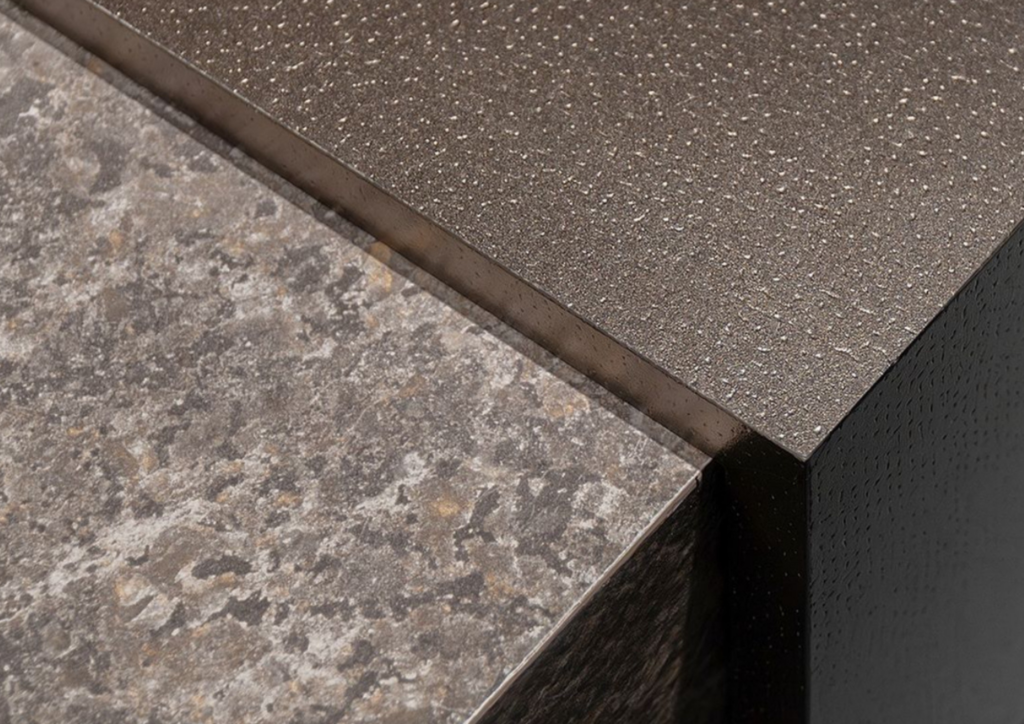
3. Marble
Most Vietnamese families believe that marble is an ideal choice for kitchen countertops due to its luxurious and elegant appearance. However, this is a common misconception when considering health and durability factors. As a nonfoliated metamorphic rock composed primarily of calcium carbonate or magnesium carbonate, marble is sensitive to acids. This sensitivity means that common kitchen ingredients like lemon juice or vinegar can etch the surface, creating subtle, dull marks that can show even on sealed marble.
We generally advise against using marble for kitchen countertops; here are a few reasons why you should consider this carefully:
- Marble is prone to scratching, staining, and absorbing water, which makes it less suitable for surfaces that will endure regular food prep and cooking.
- Its porous nature can also pose food safety risks, as unsealed marble can harbor bacteria if not meticulously maintained.
- Given the significant cost of marble compared to other materials, it may not be the most practical choice for high-use kitchen countertops.
While this doesn’t mean marble is unsuitable for the kitchen, it’s important to understand its limitations. Instead, it might be better suited for aesthetic applications, consider using it strategically in areas where it won’t be subject to constant wear, such as cabinet facades or backsplashes. This can still either contribute to a luxurious look for your kitchen or healthy for your living being.
4. Solid Surface
Understanding the construction and characteristics of solid surface countertops is vital for any homeowner looking to make an informed decision. Solid surface countertops are made from a blend of resins and minerals, typically composed of about 66% minerals (such as marble, granite, or quartzite) and 33% binding agents like acrylic, plastic, and polyester. This combination allows for impressive customization in colors, patterns, and textures, making it easy to create a kitchen that reflects your personal style.
However, it’s important to consider the health and functionality aspects of solid surface countertops. While they offer a seamless and hygienic surface for food preparation, they are softer than natural stone options, making them more prone to scratches from knives and sharp utensils. These scratches can be especially noticeable on darker surfaces, which could affect the aesthetic appeal of your kitchen over time.
Moreover, solid surface countertops can withstand boiling water temperatures up to 212°F, but they are sensitive to heat. Exceeding 250°F can lead to deformation, discoloration, or cracking if hot pots are placed directly on the surface. This is particularly important for those who enjoy cooking with high heat, as using trivets and heat pads is essential for maintaining the integrity of the countertop. In contrast, natural stone options like granite or surface used in Velacucina offer remarkable heat resistance, making them more suitable for serious home cooks who frequently use hot cookware.
5. Granite
When considering countertop materials for your kitchen, granite presents a unique blend of beauty and durability, but it’s important to you to be aware of its characteristics, particularly its health implications. As a natural stone, granite is inherently porous, containing tiny pockets that can potentially harbor bacteria if not properly maintained. While it is one of the hardest natural stones available, making it resistant to scratches, chipping, and cracking, this porous nature means that regular care is essential.
Staining is one of the main concerns with granite, and while it is durable, it is susceptible to etching and staining if food and liquids are allowed to seep into its porous surface. However, we do not recommend granite as a kitchen countertop material due to the significant effort required for regular cleaning and maintenance. Additionally, its porous nature raises health concerns, making it less than ideal for food preparation areas where hygiene is paramount.
Granite countertops excel in heat resistance, allowing them to withstand the placement of hot pots and pans without damage. Unlike materials such as engineered quartz or butcher block, which can be marred by high temperatures, granite remains intact. However, because granite can absorb heat, be cautious not to touch the surface immediately after removing a hot item, as it can retain significant warmth.
3. The Positive Impact of Greenery in Your Kitchen
To achieve a biophilic design in your kitchen, consider using sustainable hardwoods like maple or oak for cabinetry and countertops. Maple is known for its fine, consistent grain and light color, which can create a bright and airy feel, while oak offers a more pronounced grain pattern and warmth, adding a rustic charm. Both woods are not only durable, with a lifespan of several decades, but they also contribute to a cozy atmosphere by bringing natural beauty and rich texture into your kitchen.
For a touch of greenery, incorporate indoor plants such as spider plants (Chlorophytum comosum) or peace lilies (Spathiphyllum). Spider plants are particularly resilient and can adapt well to varying light conditions, making them ideal for kitchens with indirect sunlight. They are known to remove pollutants like formaldehyde and xylene from the air, enhancing indoor air quality. Peace lilies, on the other hand, thrive in low-light environments and are renowned for their ability to purify air by filtering out toxins such as ammonia and benzene. Their elegant white blooms can also add a soothing visual element to your kitchen, creating a serene and inviting space that encourages relaxation and creativity.
Conclusion
Designing a kitchen with wellbeing at its core transforms it into more than just a functional space—it becomes a nurturing environment that supports a healthy, balanced lifestyle. By thoughtfully incorporating natural elements, selecting health-conscious materials like ceramic countertops from Velacucina or granite, and implementing ergonomic and sustainable design principles, you can create a kitchen that truly serves as the heart of your home.
Every design decision—from the placement of windows to the choice of appliances—has the potential to enhance your physical health, mental wellbeing, and social connections. A carefully designed kitchen not only elevates the aesthetic value of your home but also contributes significantly to the quality of life for you and your loved ones.






